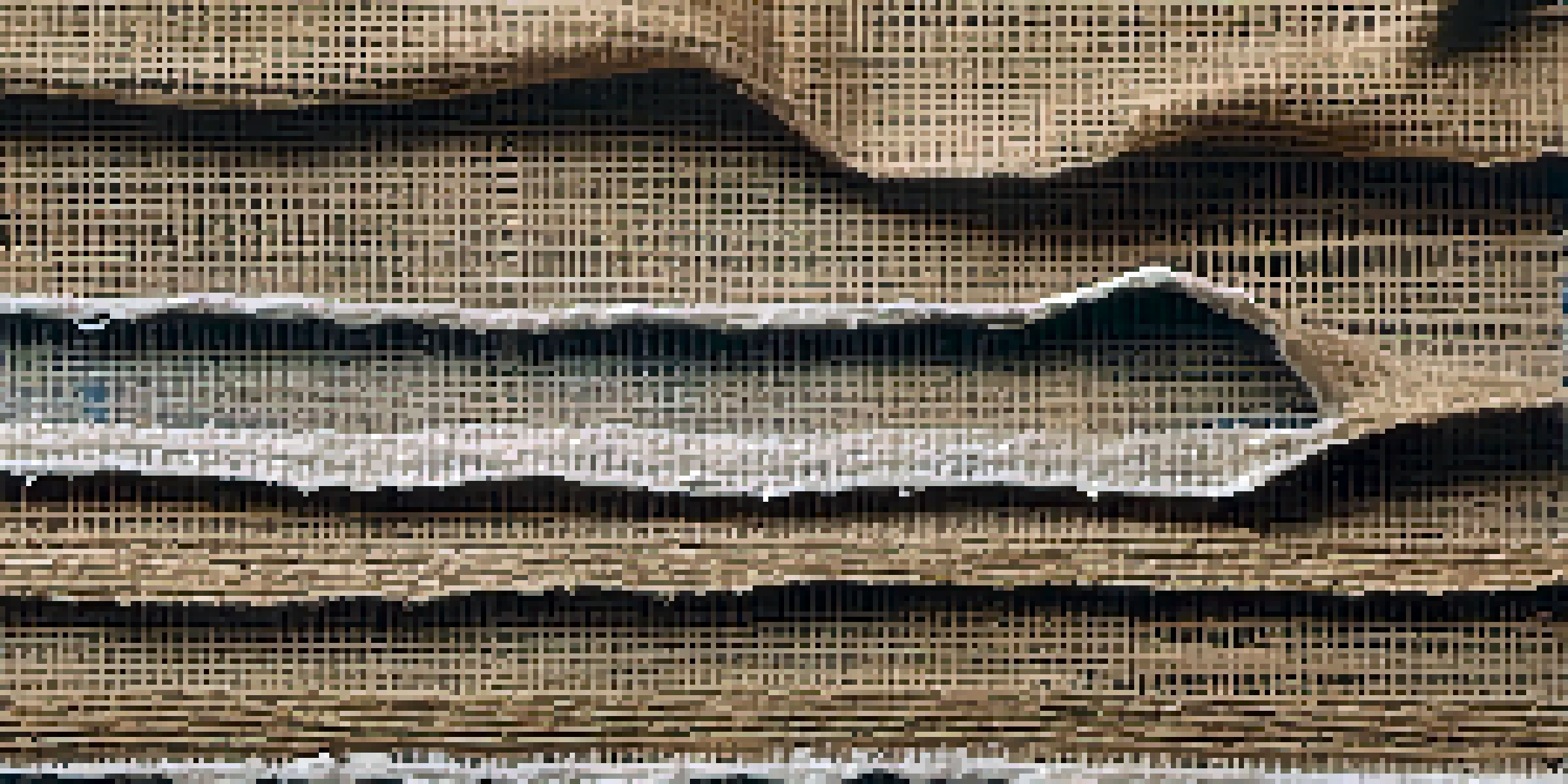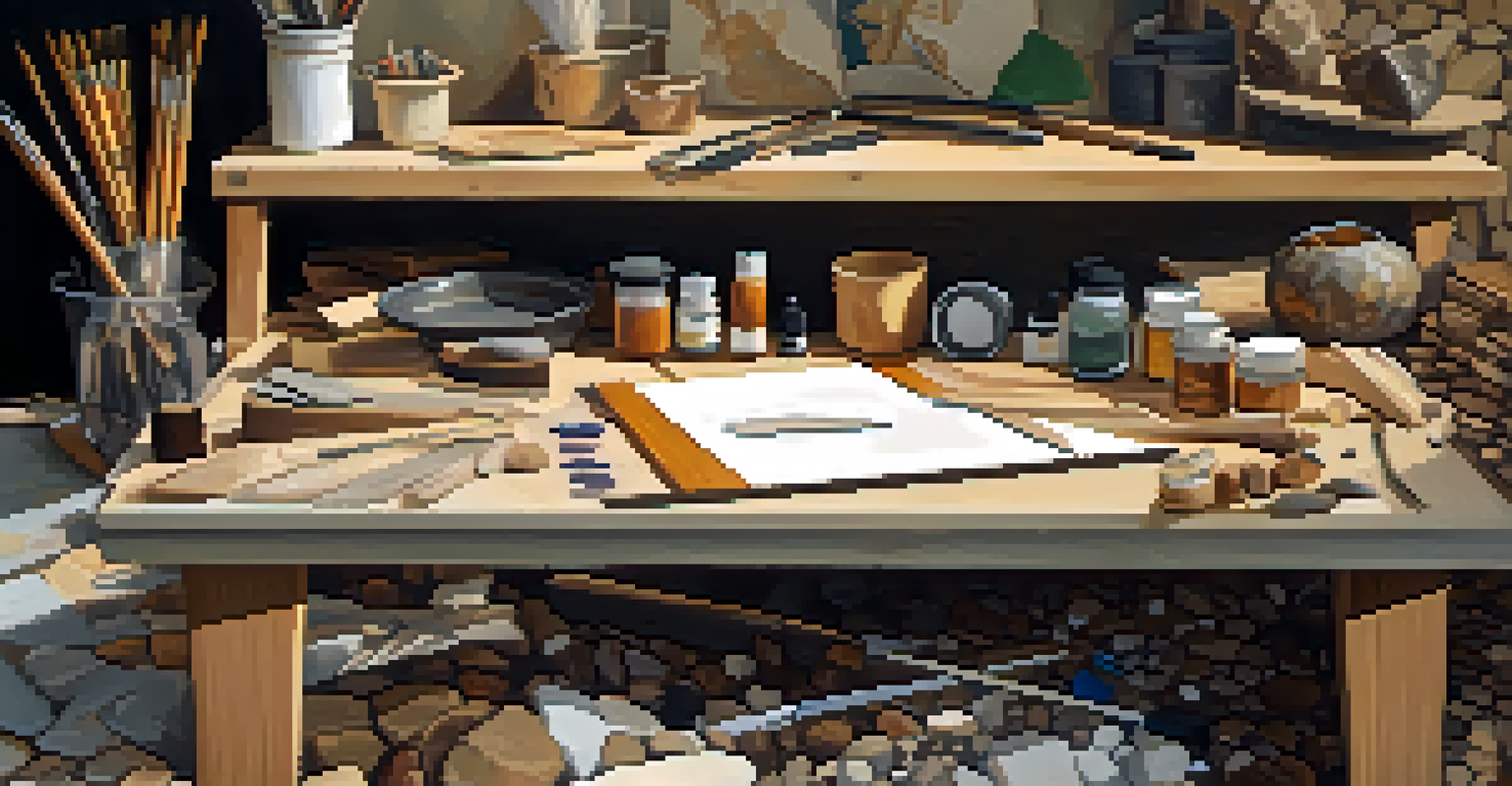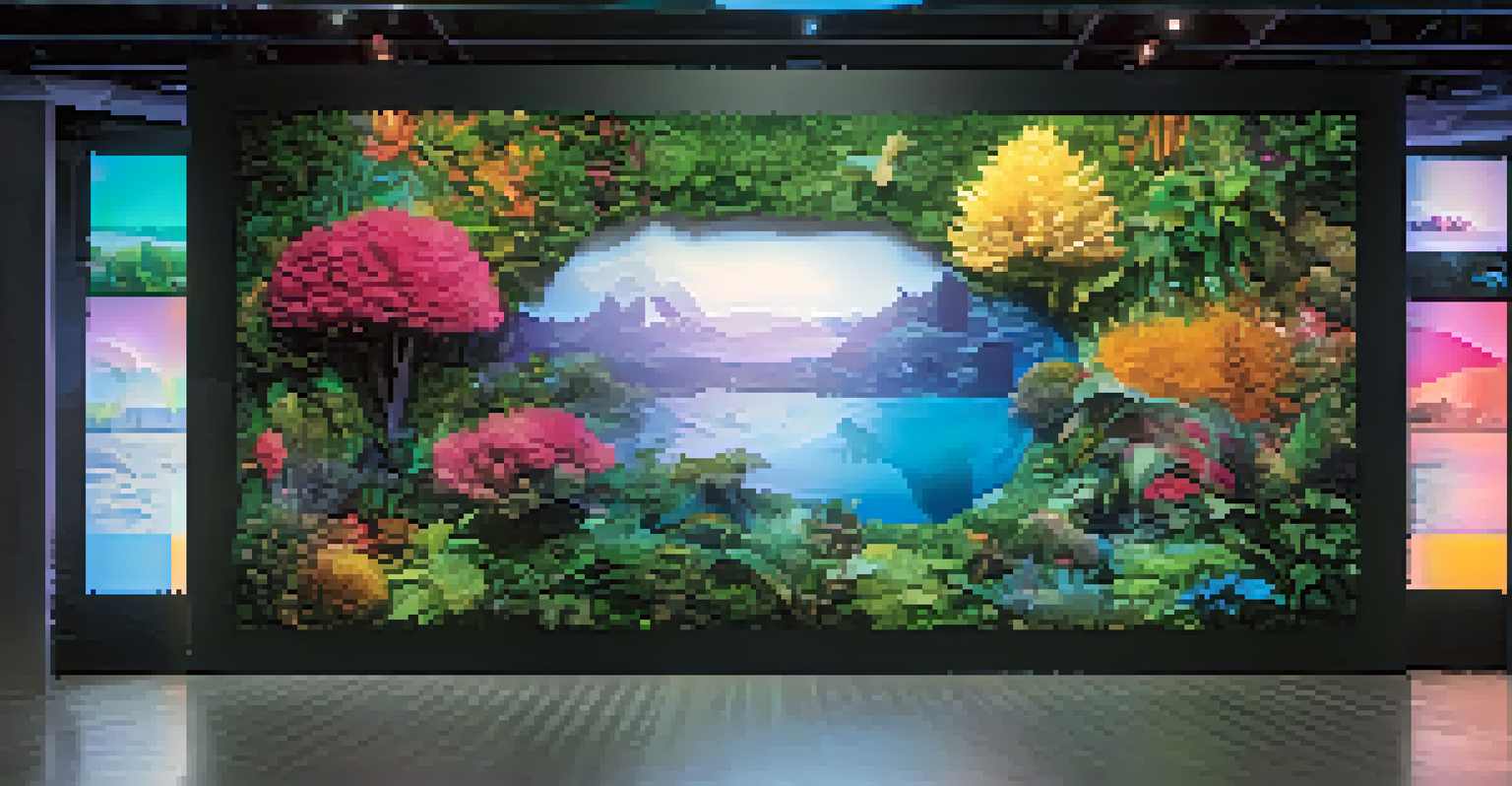Innovative Uses of Texture in Contemporary Mixed Media Art

Understanding Texture in Mixed Media Art
Texture in art refers to the surface quality that can be seen and felt. It adds depth and interest, inviting viewers to engage with the piece on a sensory level. In contemporary mixed media art, texture is not just a visual element; it's an important part of the narrative and emotional expression.
Art is not what you see, but what you make others see.
Artists often combine various materials, such as fabric, paper, and found objects, to create complex textures. This layering not only enhances the aesthetic but also tells a story about the materials themselves, their origins, and how they interact. For instance, using rough burlap alongside smooth acrylic paint can create a striking contrast that draws the eye.
By understanding how texture operates, both artists and viewers can appreciate the nuances of a piece, leading to a more profound connection. Texture can evoke memories, emotions, or even provoke thought, making it a powerful tool in an artist's arsenal.
The Role of Natural Materials in Texture
Many contemporary artists are turning to natural materials to enrich the texture of their work. Organic elements like wood, stone, and leaves can bring a sense of authenticity and connection to nature. This approach resonates with viewers, reminding them of the world outside the gallery.

For example, artist Christo Javacheff famously used fabric to wrap buildings, creating a temporary landscape that altered perceptions of familiar structures. The texture of the fabric interacted with light and wind, transforming the experience for the audience. Such innovative uses of natural materials can challenge our expectations of what art can be.
Texture Enhances Emotional Expression
Texture in mixed media art serves as a powerful tool for evoking emotions and enhancing the viewer's connection to the artwork.
By blending natural materials into their pieces, artists can also comment on environmental issues, making their work more relevant and thought-provoking. This not only enhances the visual appeal but also adds layers of meaning that invite deeper reflection.
Textural Techniques: Collage and Assemblage
Collage and assemblage are two techniques that harness texture to create dynamic artworks. Collage involves layering different materials, while assemblage takes it a step further by incorporating three-dimensional objects. Both methods encourage artists to experiment with texture in ways that flat surfaces alone cannot achieve.
The best artist has no conception that a marble block does not contain within it, but he knows it must be freed.
Take, for instance, the works of artist Robert Rauschenberg, who famously combined painting with everyday objects. His 'Combines' merged traditional artistic techniques with found materials, creating visually rich textures that invite tactile exploration. This fusion of styles helps to break down barriers between fine art and everyday life.
These techniques not only challenge conventional definitions of art but also invite viewers to appreciate the complexity of the materials used. The myriad textures found in a collage or assemblage piece can evoke a range of emotions, further enhancing the viewer's experience.
Digital Innovation: Textures in Virtual Art
As technology advances, so does the exploration of texture in digital art. Artists are now able to simulate a wide range of textures using software, pushing the boundaries of creativity. Digital platforms allow for endless experimentation, enabling artists to play with texture in ways that were previously unimaginable.
For instance, the use of 3D modeling and virtual reality can create immersive experiences where texture becomes a key component. Viewers can interact with these digital pieces, feeling as though they can reach out and touch the textures on screen. This level of engagement transforms the relationship between the viewer and the artwork.
Natural Materials Add Authenticity
Artists are increasingly using natural materials to create authentic textures that resonate with viewers and comment on environmental issues.
Moreover, digital artists can blend traditional textures with digital effects, resulting in unique pieces that straddle the line between the physical and the virtual. This innovation not only expands artistic possibilities but also challenges our perceptions of what constitutes art in the modern world.
Cultural Influences on Textural Choices
Texture in mixed media art is often a reflection of cultural influences. Different cultures have unique approaches to texture, from the intricate patterns of African textiles to the minimalist aesthetics of Japanese art. These cultural elements can influence an artist's choice of materials and techniques, adding layers of meaning to their work.
For example, artists using traditional weaving techniques may incorporate textures that tell stories of their heritage. The tactile quality of these pieces connects viewers to the cultural narratives embedded within them. This interplay between texture and culture enriches the viewer's understanding and appreciation of the artwork.
By embracing cultural influences, contemporary artists can create a dialogue between past and present, inviting audiences to explore diverse perspectives through texture. This not only enhances the visual appeal but also fosters greater appreciation for the stories behind the materials.
Texturing Emotions: The Psychological Impact
Texture has the power to evoke emotions, making it a vital element in mixed media art. Different textures can elicit various feelings—smooth surfaces may convey calmness, while rough textures can evoke tension. Artists often manipulate texture to guide the viewer's emotional response, enhancing the overall impact of their work.
For instance, an artist might use jagged edges and harsh materials to express chaos or conflict, while soft, flowing textures could represent serenity or comfort. This intentional use of texture enables artists to create a visceral experience for the audience, drawing them deeper into the narrative.
Digital Art Expands Textural Boundaries
Advancements in technology allow digital artists to simulate and experiment with textures, challenging traditional notions of art.
Understanding the psychological impact of texture can also help viewers connect more meaningfully with art. By recognizing how different textures influence their emotions, audiences can engage with the artwork on a deeper level, leading to a more profound appreciation of the artist's intent.
Future Trends in Textural Exploration
As the art world continues to evolve, new trends in texture are emerging within contemporary mixed media. Artists are increasingly exploring sustainable materials, using recycled items to create texture-rich works that also address environmental concerns. This shift reflects a growing awareness of ecological issues in the art community.
Additionally, the integration of technology is paving the way for innovative textural experiences. Artists are experimenting with augmented reality, allowing viewers to interact with textures in real-time, creating a dynamic relationship between the artwork and the audience. This trend offers exciting possibilities for engagement and exploration.

Looking ahead, the future of texture in mixed media art promises to be as diverse and imaginative as the artists who create it. By embracing new materials and technologies, artists can continue to push the boundaries of texture, ensuring that it remains a vital and evolving aspect of contemporary art.